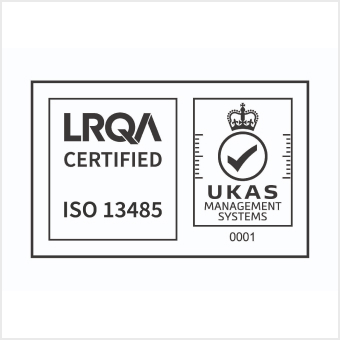Rubber – Deterioration by Heat and Oxygen
Part 1: Introduction to Rubber Deterioration by Heat and Oxygen
- Introduction to Rubber Materials
- Overview of rubber as a material: Types of rubber (natural rubber, synthetic rubber, thermoplastics, etc.)
- Properties of rubber: Elasticity, flexibility, durability, and resilience
- The importance of rubber in modern industries (automotive, healthcare, aerospace, consumer goods)
- The Need for Testing Rubber Deterioration
- Why testing is crucial: Predicting the lifespan and performance of rubber products
- Common failures due to heat and oxygen exposure
- The role of rubber deterioration tests in ensuring reliability and safety
- Deterioration Mechanisms: Heat and Oxygen
- Explanation of how heat and oxygen contribute to rubber degradation
- The chemical processes involved: Oxidation, crosslinking, and chain scission
- Impact on rubber properties: Hardening, embrittlement, loss of elasticity, and reduced strength
Part 2: Scientific Background of Rubber Degradation by Heat and Oxygen
- Thermal Degradation of Rubber
- The science behind thermal degradation: Heat-induced bond breaking and molecular rearrangements
- How temperature accelerates the degradation process
- The role of stabilizers and antioxidants in mitigating heat degradation
- Measuring temperature effects: The Arrhenius equation and accelerated aging
- Oxidative Degradation of Rubber
- The chemical nature of oxidation: Oxygen molecules attacking the polymer structure
- The role of antioxidants in rubber protection against oxidation
- The synergistic effect of heat and oxygen on rubber aging
- Key indicators of oxidative degradation: Hardness, brittleness, and discoloration
- Impact of Heat and Oxygen on Physical and Chemical Properties
- Hardness: How heat and oxygen lead to the hardening of rubber
- Elongation and tensile strength: The effect of degradation on stretchability and strength
- Flexibility and elasticity: Loss of the ability to return to original shape
- Other properties affected by thermal and oxidative degradation: Electrical properties, surface roughness, and chemical resistance
Part 3: Testing Methods for Rubber Deterioration by Heat and Oxygen
- Testing Protocols for Rubber Deterioration
- Standardized testing methods for heat and oxygen exposure
- ASTM D573: Heat aging test for rubber
- ISO 188: Accelerated aging tests for elastomers and rubbers
- ASTM D2000: Classification system for rubber materials based on performance
- Importance of testing duration, temperature, and oxygen levels in simulating real-world conditions
- Air Oven Testing for Heat and Oxygen Exposure
- Overview of air oven testing for rubber deterioration
- The principle behind air oven aging: Continuous exposure to elevated temperature and oxygen
- Equipment used for air oven tests: Forced air vs. static air ovens
- How to prepare rubber samples for air oven tests
- Test parameters: Temperature, duration, humidity, and oxygen concentration
- Oxygen Bomb Testing for Rubber
- Overview of oxygen bomb tests as a method for evaluating oxidative aging
- The process: High-pressure oxygen exposure at elevated temperatures
- The importance of oxygen concentration and temperature in testing oxidative resistance
- Analysis of changes in rubber properties post-exposure
- Dynamic Mechanical Analysis (DMA) and Other Analytical Methods
- The use of dynamic mechanical analysis to assess rubber’s response to heat and oxidative stress
- Thermal gravimetric analysis (TGA) and differential scanning calorimetry (DSC) in testing rubber degradation
- The role of infrared spectroscopy (FTIR) and mass spectrometry in identifying chemical changes in degraded rubber
- Visual inspection and surface analysis: Cracking, discoloration, and material loss
Part 4: Rubber Materials and Their Response to Heat and Oxygen
- Natural Rubber and Its Deterioration
- Overview of natural rubber (NR) properties and its applications
- How natural rubber responds to heat and oxidative degradation
- The effect of antioxidants and other additives on NR heat and oxidation resistance
- Case studies of natural rubber in automotive, healthcare, and other industries
- Synthetic Rubbers and Their Aging Behavior
- Common synthetic rubbers: SBR (styrene-butadiene rubber), NBR (nitrile rubber), EPDM (ethylene propylene diene monomer), and others
- The differing chemical structures of synthetic rubbers and their unique responses to heat and oxygen
- Performance of synthetic rubbers in automotive, industrial, and sealing applications
- The role of polymer modifiers, fillers, and plasticizers in improving heat and oxidation resistance
- Thermoplastic Elastomers (TPEs) and Their Response to Heat and Oxygen
- What are thermoplastic elastomers? Properties and applications
- Heat and oxidative degradation of TPEs compared to thermosets
- The challenge of preserving the flexibility and elasticity of TPEs under heat and oxygen exposure
- Example applications of TPEs in consumer goods, medical devices, and automotive components
- Silicone Rubber and Its Exceptional Heat and Oxygen Resistance
- Overview of silicone rubber: Composition and applications
- Heat and oxidative aging in silicone rubber: Why it is more resistant than other types of rubber
- Key applications of silicone rubber in high-temperature environments (e.g., automotive gaskets, medical devices)
- How to enhance silicone rubber properties through additives and fillers
- Fluoroelastomers and Their Resistance to Heat and Oxygen
- Fluoroelastomers (e.g., Viton, Kalrez) and their unique properties
- The resistance of fluoroelastomers to high temperatures and aggressive environments
- Applications in the aerospace, chemical processing, and automotive industries
- Comparative analysis of fluoroelastomers versus other rubber materials in high-heat and oxidative conditions
Part 5: Industry Applications and Case Studies
- Automotive Industry: Heat and Oxygen Aging of Rubber Components
- The role of rubber in automotive parts: Seals, gaskets, tires, and hoses
- How heat and oxygen exposure impact automotive rubber performance and longevity
- Case studies of rubber deterioration in under-the-hood components
- The importance of rubber aging tests in meeting automotive industry standards
- Aerospace Industry: Rubber in High-Temperature and Oxidative Environments
- Rubber in aerospace applications: Seals, gaskets, and engine components
- Testing rubber deterioration under extreme heat and high-altitude conditions
- The impact of heat and oxygen on rubber performance in aviation and space exploration
- Examples of rubber failures in aerospace components and their causes
- Medical Industry: Rubber in Medical Devices
- Rubber materials used in medical devices: Seals, tubing, gaskets, and gloves
- The critical role of rubber aging resistance in ensuring the safety and reliability of medical devices
- Special considerations for biocompatibility and sterilization
- Case studies of heat and oxidative degradation in rubber medical components
- Consumer Goods: Rubber Deterioration in Everyday Products
- Rubber used in consumer goods: Footwear, toys, and household products
- How heat and oxygen exposure degrade rubber components over time
- The importance of aging tests in ensuring long-lasting and durable consumer products
- Real-world examples of rubber failures in everyday products
Part 6: Advances in Rubber Deterioration Testing and Material Development
- Innovative Testing Methods and Technologies
- Advances in accelerated aging tests for rubber materials
- The role of simulation and predictive modeling in rubber material testing
- Use of artificial intelligence (AI) and machine learning in analyzing test results
- Future developments in testing technology and how they can improve rubber performance predictions
- Development of Heat and Oxygen Resistant Rubber Materials
- New materials and additives designed to improve heat and oxidation resistance
- Nanotechnology in rubber materials: How nanoparticles improve thermal and oxidative stability
- The role of green chemistry and sustainable materials in enhancing rubber longevity
- Advances in rubber formulations for high-performance applications
- Sustainability Considerations in Rubber Material Development
- The push for eco-friendly rubber materials: Biodegradable rubbers, sustainable sourcing, and recycling
- How sustainability considerations are influencing rubber development in response to heat and oxygen exposure
- Future trends in rubber material science and their impact on the environment
Part 7: Conclusion and Future Outlook
- Summary of Key Findings
- A recap of the key factors affecting rubber deterioration due to heat and oxygen exposure
- How air oven and oxygen bomb tests help simulate real-world conditions for rubber aging
- The importance of testing rubber materials in ensuring long-term product performance and reliability
- The Future of Rubber Deterioration Testing
- The need for continued research and development in heat and oxygen resistance testing
- The role of innovation in advancing rubber material science and testing methods
- Closing thoughts on the future of rubber in high-performance applications



